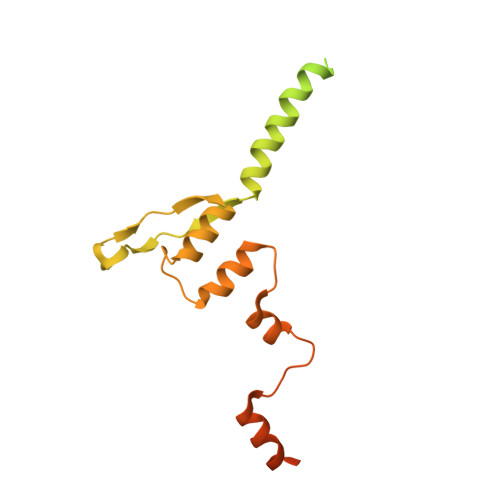Structure of the Respiratory Syncytial Virus Polymerase Complex.
Gilman, M.S.A., Liu, C., Fung, A., Behera, I., Jordan, P., Rigaux, P., Ysebaert, N., Tcherniuk, S., Sourimant, J., Eleouet, J.F., Sutto-Ortiz, P., Decroly, E., Roymans, D., Jin, Z., McLellan, J.S.(2019) Cell 179: 193-204.e14
- PubMed: 31495574
- DOI: https://doi.org/10.1016/j.cell.2019.08.014
- Primary Citation of Related Structures:
6PZK - PubMed Abstract:
Numerous interventions are in clinical development for respiratory syncytial virus (RSV) infection, including small molecules that target viral transcription and replication. These processes are catalyzed by a complex comprising the RNA-dependent RNA polymerase (L) and the tetrameric phosphoprotein (P). RSV P recruits multiple proteins to the polymerase complex and, with the exception of its oligomerization domain, is thought to be intrinsically disordered. Despite their critical roles in RSV transcription and replication, structures of L and P have remained elusive. Here, we describe the 3.2-Å cryo-EM structure of RSV L bound to tetrameric P. The structure reveals a striking tentacular arrangement of P, with each of the four monomers adopting a distinct conformation. The structure also rationalizes inhibitor escape mutants and mutations observed in live-attenuated vaccine candidates. These results provide a framework for determining the molecular underpinnings of RSV replication and transcription and should facilitate the design of effective RSV inhibitors.
- Department of Molecular Biosciences, University of Texas at Austin, Austin, TX 78712, USA.
Organizational Affiliation:

















